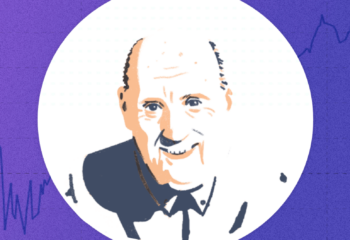What should investors do?
I’ve been looking at Q&A features on different web sites this morning, and finding there are a lot of questions such as Should I Move Everything to Cash now?
Whenever I hear a question like that, I believe the investor is fishing for an answer along the lines of: No worries, keep all of your money in equities. You’ll make the losses back, no problem.
It would be great if the market were every investor’s personal piggy bank, but it’s just not. As a money manager I interviewed said on Monday (and I paraphrase), if you were overweighted in equities to the point where you are not able to meet your obligations if the market slides again or can’t sleep at night, sell. If not, consider how the changing market conditions fit in with your portfolio strategy, and make adjustments as necessary.
What’s ahead?
In this video interview from the Financial Times, independent economist Andy Xie predicts volatility, not a prolonged downturn. As for safe havens? “Companies are healthier than countries,” he says.
A little black humor seems apropos
These performance artists protested Wall Street’s lack of transparency (one of our pet peeves) with their own powerful example of absolute exposure: They stripped on Wall Street.
Comparisons
Are we in for another financial crisis? Nelson Schwartz of The New York Times looks at the question head on in this piece.
European banks are overexposed to debt, not subprime mortgages, but the sovereign debt of countries whose ability to repay is in doubt. While hedging his bets, Mr. Schwartz makes the case that this situation will not lead to another financial crisis.
The key differences:
• The outlines of the sovereign debt crisis are clearer. The uncertainty over the extent of banks’ and insurers’ exposure to subprime mortgages helped cause the financial crisis.
• Banks here in the States are in better financial shape.
• Companies also have more cash so aren’t as vulnerable to another lockdown on credit.
There’s another comparison on my mind. On a trip this week across country to Wealthfront’s offices in Palo Alto, I’ve been reading Amity Shlaes’s history of the Great Depression, The Forgotten Man.
I paid special attention to the chapter about October 1937, when, after years of painful recovery, the market declined with a ferocity that echoed that of the 1929 crash. Bond prices plummeted farther than they had on any single day in three years, writes Ms. Shlaes, “As for stock shares, they were down between $2 and $15, the greatest drop in six years.”
It was the start of the so-called Roosevelt Recession within the Depression. Angry that the private sector wouldn’t spend money to help pull the nation out of the Depression, Roosevelt levied a tax on profits. Companies were on what Roosevelt called a “capital strike.” They no longer had the cash reserves to retain employees; they also stopped investing in equipment.
Unemployment spiked that year, but slowly began trending down again, and then the need to fight facism overtook both economic and political concerns.
Ms. Shlaes’s summary at the end of the book: “The story of the mid-1930s is the story of a heroic economy struggling to recuperate but failing to do so because of perverse federal policy.”
I took two lessons from her work: that long recoveries from financial crises contain many unnerving ups and downs, and second, that we need a new New Deal – because the first one, built of entitlements that have grown unaffordable, has outlived its effectiveness.



